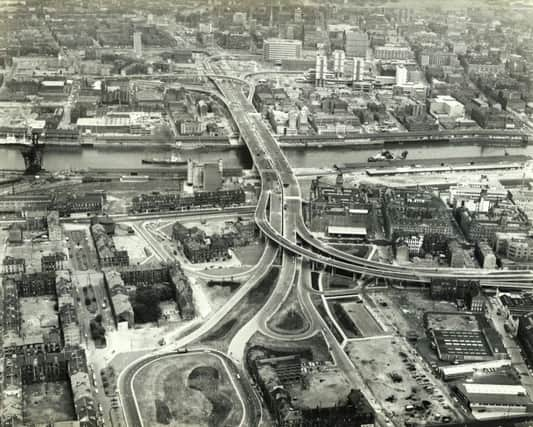Love it or loath it, Glasgow’s M8 needs a positive legacy - Alastair Dalton


My first vivid memories of Glasgow were not of visiting the city as a child but a TV documentary showing the M8 being built through swathes of the city centre on the back of massive redevelopment.
Love it or loathe it – and it appears many are in the latter camp – the motorway is an integral part of Glasgow, which is to be chronicled in the Glasgow Motorway Archive’s plans for a vastly expanded, image-led website.
Advertisement
Hide AdAdvertisement
Hide AdReaction on Twitter to what some saw as a “celebration” of the M8 was overwhelmingly negative after my story revealing the project in Scotland on Sunday.
One reader described the reduced city centre congestion it had brought as a “totally unacceptable price to pay”, while another said it had “utterly failed to limit car use”.
There were also observations that Edinburgh had been saved from a similar motorway fate, although Stuart Baird, the archive’s founder, has said there are now more big lorries in Edinburgh than Glasgow city centre.
Only one person came to the beleaguered motorway’s defence, posing the question: “Can you imagine the gridlock and pollution today had the M8 not been built?”
Even though only half of the planned motorway network around Scotland’s largest city was constructed, Baird reckons it’s very unlikely any more will follow.
It’s worth remembering the last Glasgow motorway to be opened – the M74 extension in 2011 – was approved by ministers despite a public inquiry recommending it be refused.
However, it is interesting hearing Baird relate how it was envisaged that the M8 would fit into Glasgow’s transport network.
Multi-storey car parks were built beside it on the edge of the city centre, which remain today, where motorists would park and continue on foot. The section north of the Kingston Bridge was built in a cutting rather than on stilts to reduce its impact and make a feature of the Mitchell Library, despite adding 25 per cent to the cost.
Advertisement
Hide AdAdvertisement
Hide AdUnfortunately, north of the city centre, the motorway was built on stilts, although Baird said that enabled the retention of existing streets.
Another observation will cut no ice with environmentalists, but, according to Baird, the M8 brought a touch of the US freeway to Glasgow, along with higher design standards than on other British motorways.
That even extended to the footbridges over the M8, which were made one third wider than normal, providing an attractive sense of space that Baird said had led to more people using them than those in other cities.
Other curious features of the motorway include the White Cart viaduct beside Glasgow Airport – Scotland’s longest – being built so high so that vessels could sail from a nearby shipyard, which ironically closed before it was completed.
The 50th anniversary of the Kingston Bridge in June, followed by the COP26 climate conference just down the River Clyde in November will focus more attention on the motorway and sustainable transport than perhaps at any time since it was built.
The challenge for the future is to take the opportunity of using the space it occupies in the greenest and most efficient way possible, such as for electric and other zero-emission vehicles, so the M8 develops a more positive legacy over the next 50 years.